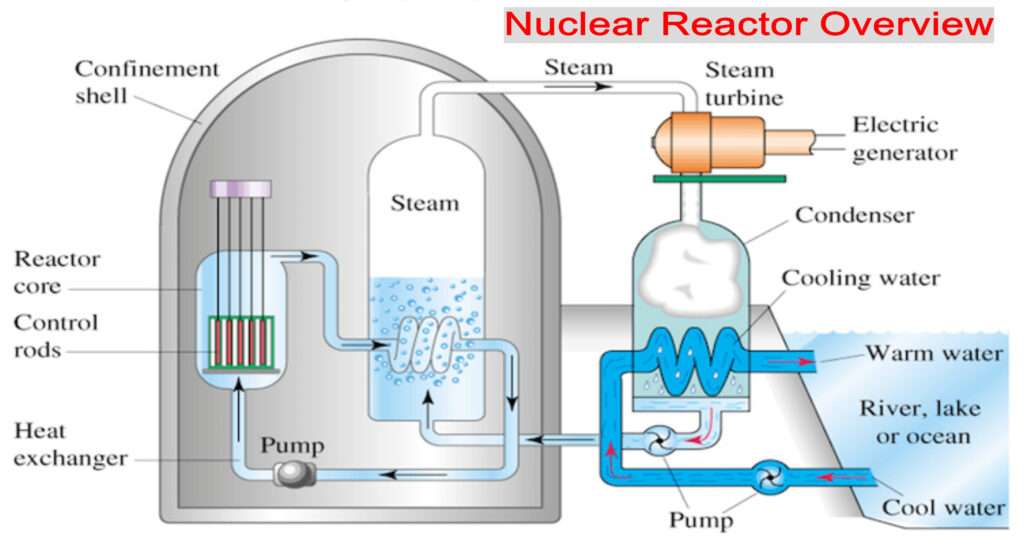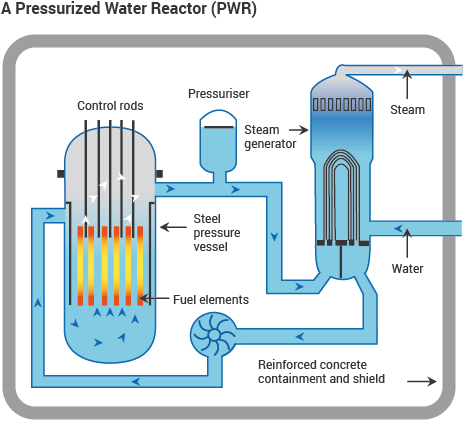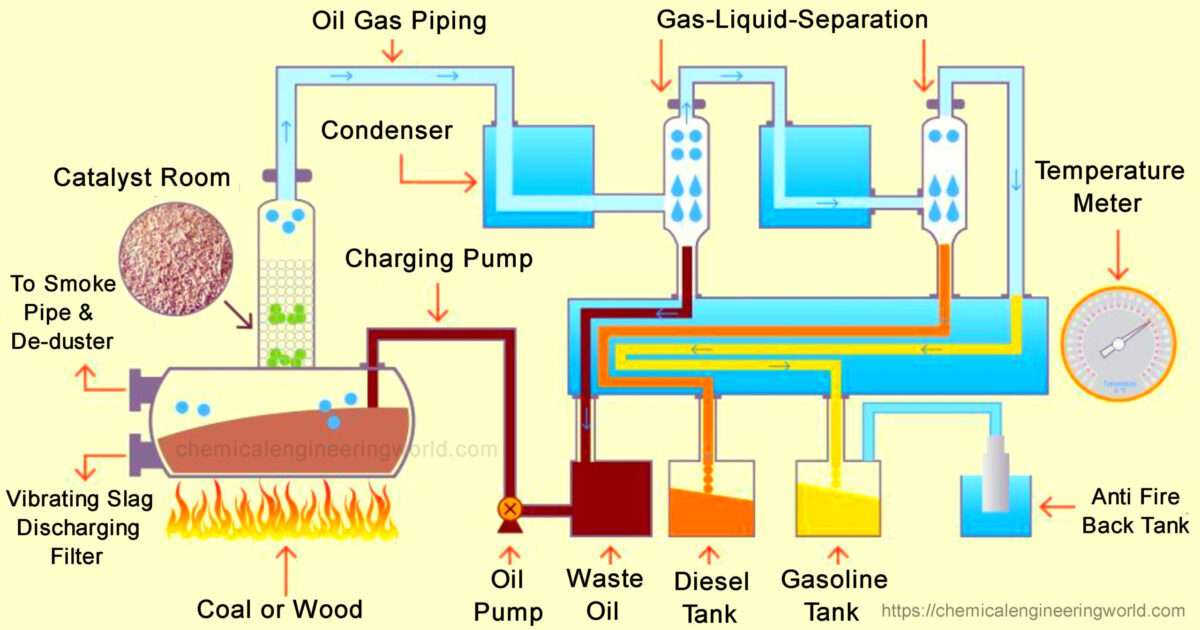Nuclear Reactor Overview

Nuclear Reactor Overview:- A nuclear reactor is a vessel in which a nuclear reaction is carried out and maintained. The purpose of a nuclear reactor is to generate electricity, propel submarines and large ships, district heating systems, for steam powered air craft catapult etc.
The principle involved in the functioning of a nuclear reactor is nuclear fission. In nuclear fission, the nucleus of a heavy element is hit by a neutron due to which it breaks into different smaller nuclei. The resulting fragments are not of the same element hence this is a process of nuclear transmutation.
Splitting of atoms produces lots of energy in the form of heat. This heat is harnessed using either water or gas and then it is used to generate steam. The generated steam is used to drive the turbines which are used to produce electricity.
Components which are common to most types of the nuclear reactors are:
- Fuel
- Moderator
- Control Rods
- Coolant
- Pressure Vessel
- Steam Generator
- Containment
Components of a Nuclear Reactor

Fuel:
The most common fuel used in nuclear reactors is Uranium. The Uranium are filled inside tubes to take shape of a rod, they are also refereed as fuel rods. If the nuclear reactor is to be operated for first time then a neutron source is needed to start the reaction. The neutron sources are usually accompanied with elements which are known to be alpha emitters. The alpha decay causes neutrons to be released from the source. When reactor is operated more than one time then enough neutrons are there to start the nuclear reaction.
Moderator:
When the neutrons are released from the core, they travel very fast which may lead to them causing less fission. In order to increase the rate of fission, moderators are used to slow down the neutrons so that they may cause fission. The moderator is a material which is filled throughout the reactor. This material can be water, graphite or heavy water.
Control Rods
They are materials which are made in shape of the cylinder and are made up of neutron absorbing material. They are used to control the rate of reaction by either lowering the rods inside the reactor or withdrawing it. The reason for using control rods is that some neutrons are released with a delay. The control rods have the capability to even halt the ongoing nuclear reactions hence they are especially useful at times of emergencies.
Coolant:
When the nuclear fission reaction happens in the core of the reactor a lot of heat is generated. The function of a coolant is to remove this heat. The purpose of the removal of heat is to not let temperature rise so high inside the reactor that the heat melts the internals of the core and another main purpose is to transfer the heat to water to transform it into steam.
Pressure Vessel:
It is a large robust vessel which contains the core of the reactor along with all the internals along with the coolant and its delivering mechanism.
Steam Generator:
Some reactors contain secondary systems in coolant delivery system such as heat exchangers wherein heat is exchanged with water which gets converted into steam. In some reactor systems the coolant circulating around the core itself gets converted into steam. The tubes delivering the coolants in such cases are quite robust.
Containment:
It is a large structure which contains and covers all the components of nuclear reactor and steam generator. The containment walls are several meters thick and they are made in this way to protect everyone from the effects of radiation in case the reactor malfunctions.
Pressurized Water Reactor

Pressurized water reactor is one of the most common types of nuclear reactor in operation all around the world. They contain two coolant loops; primary and secondary. The primary loop is installed near the core of the nuclear reactor. The secondary loop is installed near steam generator.
When the nuclear reaction happens in the core, a lot of heat is generated which heats up the water in the primary coolant loop via thermal conduction through the cladding. In the process it gets highly pressurized. This coolant is then passed through a heat exchanger called steam generator. It contains water which is low pressurized. Heat is exchanged and then steam is generated.
The pressurized steam is then passed through a turbine which is connected to an electric generator due to which electricity is generated. This electric generator is in turn connected to an electric grid for transmission of electricity.
Source:- world-nuclear, Wiki
Image:- howstuffworks, fos.cmb.ac.lk, osr.org
































